Incorporating Form-Based Codes into the Design-Based Approach to Historic Building Conservation in Phuket, Thailand
Abstract
:1. Introduction
1.1. Relevance of FBCs
1.2. Components and Process of FBCs
1.2.1. Building Placement
1.2.2. Allowed Frontage Types
1.2.3. Allowed Building Types
1.3. Problems in Thailand’s Urban Planning System
1.4. The Relationship between the Historic District and the Zoning District
2. The Study Area: Phuket’s Old Town
2.1. The Study Area
2.2. Existing Codes and Regulation Analysis
3. Research Methodology
3.1. Data Collection
- (1)
- (2)
- Vision, People—Communication Vision: in-depth interviews to ascertain a community vision from the three stakeholders, i.e., government, private companies, and people who own buildings in the study area. This provided a clear understanding of the intentions for the future of the community at the end of the study.
- (3)
- Visualization, Prosperity, Vision of Growth, Assembling and Formatting, Progress—Plan Implementation: to transfer all processes into the final Form-Based Code document.
3.2. Data Analysis
- (1)
- (2)
- Proposed Cases—Cases that have successfully implemented FBCs. We will be studying three factors from both cases’ Building Standard, Building Use, Building Placement, and Building Materials, to write a proposal for the baseline case’s building façade alteration to fit the Sino-Portuguese architecture format shown in Figure 2.
- (1)
- Residents’ satisfaction and the existing building suitability.
- (2)
- The ease with which the building façade can be altered according to the laws and regulations.
- (3)
- Public awareness of the importance of the collaboration between the government, private companies, and the residents in the establishment of a preservation plan.
- (4)
- Restrictions and comments on the implementation of FBCs in Phuket’s Old Town.
4. Results and Discussion
4.1. Documenting
4.2. Visioning
- (1)
- The design and determination of guidelines and codes for architectural preservation and restoration that include both building façades and building placement. These guidelines and codes should be presented as options to be chosen when designing and constructing both old and new buildings.
- (2)
- Giving the proper rights to landowners that follow design guidelines. These rights include (1) tax incentives or subsiding patronage, (2) promoting the preservation and restoration of the city’s historical architecture and heritage, and (3) collecting funds to preserve, conserve, and manage building preservation projects that are related to different templates dependent on the degradation of the building, using both government and private funds. The stakeholders’ visions for both government and house owners should be developed, in order to increase the organization’s project and the staff’s potential and ability.
4.3. Visualizing, Assembling, and Formatting
5. Conclusions and Recommendations
5.1. Research Conclusion
5.2. Recommendation on Thai Urban Planning in Historic Districts
5.3. Recommendations
Author Contributions
Funding
Conflicts of Interest
References
- Parolek Deniel, G. Code Next Shaping the Austin We Imagine: What Is Form-Based Codes; John Wiley & Sons, Inc.: Austin, TX, USA, 2015. [Google Scholar]
- Form Based Codes Institute. Form-Based Codes. Defined. Available online: http://formbasedcodes.org/definition (accessed on 1 May 2019).
- Hazel Borys. Ways to Fail at Form-Based Codes 02: Make It Mandatory Citywide. 2013. Available online: http://www.placemakers.com/2013/04/22/ways-to-fail-at-form-based-codes-02/ (accessed on 25 September 2018).
- Cheung-Heng, K. Form-Based Urban Planning Code and Its Implications in Hongkong; Faculty of Architect the University of Hongkong: Hongkong, China, 2012. [Google Scholar]
- Sabri, A.K. Towards a Localized Form-Based Code for Abu Dhabi Urban Neighborhoods; United Arab Emirates University: Al Ain, UAE, 2016. [Google Scholar]
- City and Country of Denver Planning and Development Office. The Common: Urban Standard and Guideline; Design Workshop, Inc.: Denver, CO, USA, 1997. [Google Scholar]
- Daniel, G.; Parolek, K.P.; Paul, C.C. Form-Based Code: A Guide for Planner, Urban Designer, Municipalities, and Developers; John Wiley & Sons, Inc.: Hoboken, NJ, USA, 2008. [Google Scholar]
- Borys, H.; TALEN, E. Codes Study, PlaceMakers. 2012. Available online: http://www.placemakers.com/how-we (accessed on 2 January 2019).
- Nan, T.; Amy, A. Local Historic District Ordinance vs. Zoning Ordinance; Michigan Historic Preservation Network and National Trust for Historic Preservation: Lansing, MI, USA, 2011. [Google Scholar]
- Parolek, D.G.; Parolek, K.; Crawford, P.C. Form-Based Codes, A Guide for Planners; John Wiley & Sons, Inc.: Hoboken, NJ, USA, 2008. [Google Scholar]
- Phuket Office of Public Works and Town & Country Planning. Town Planning Act B.E. 2562; Phuket Office of Public Works and Town & Country Planning: Bangkok, Thailand, 2019. [Google Scholar]
- Ministry of Interior. Ministerial Regulation No. 55 B.E. 2543 Issued by virtue of the Building Control Act., B.E. 2522; Ministry of Interior: Bangkok, Thailand, 2017.
- Litchfield Whiting Bowne; Associates. Greater Bangkok Plan 2533U; Town and Country Planning Department: Bangkok, Thailand, 1964. [Google Scholar]
- Rangwala, K. Why Design Guidelines, on Their Own, Don’t Work. 2010. Available online: http://formbasedcodes.org/articles/design-guidelines-dont-work/ (accessed on 13 October 2018).
- Pitapong, B. Urban Policy in Thailand: Looking Back and Moving Forward. In Proceedings of the 4th International Conference on Magsaysay Awardees: Good Governance and Transformative Leadership in Asia, Bangkok, Thailand, 31 May 2016. [Google Scholar]
- Vimolsiddhi, H. Creating a Livable Urban Environment: Unseen Problems and Possible Solution. J. Archit. Plan. Res. Stud. Thail. 2011, 8, 9–26. [Google Scholar]
- Nikom, B. The Challengers of Urban Planning in Thailand. 2019. Available online: http://tatp.or.th/ineffective-thai-urban-planning/ (accessed on 20 July 2018).
- Sommai, P. Where Is the future of Thai Urban Planning. 2017. Available online: https://prachatai.com/journal/2017/07/72577 (accessed on 28 July 2018).
- Yongtanit, P. Critical Issues on the Conservation of Historic Urban Community for Thailand. J. Soc. Sci. Humanit. Art Thammasat Univ. Thailand. 2013, 9, 102–119. [Google Scholar]
- Town of Fort Myers Beach. Fort Myers Beach Land Development Code; Spikowski Planning Associates: Fort Myers, FL, USA, 2006. [Google Scholar]
- Soledad City Council. City of Soledad Downtown Specific Plan; Soledad City Council: San Luis Obispo, CA, USA, 2006. [Google Scholar]
- Philip, W. Yoking Form-Based Codes and Historic District, How to Get the Best Combination; American Planning Association, AIPC: Chicago, IL, USA, 2014; pp. 36–40. [Google Scholar]
- Metiya, T. Desired Physical Environment of Walking Street: A Case Study of Thalang Street, Phuket. Res. Dev. J. Suan Sunandha Rajabhat Univ. Thail. 2017, 9, 53–68. [Google Scholar]
- Puttanapon, S. The Shop House Façade in Historic Urban Landscape of Phuket Old Town. Vernac. Archit. Cult. Environ. Silpakorn Univ. Thail. 2018, 5, 55–68. [Google Scholar]
- Ministry of Natural Resources and Environment. Natural Resources and Environment Announcement B.E. 2559; Ministry of Natural Resources and Environment: Bangkok, Thailand, 2017.
- The Phuket Provincial Statistical Office. Cities, Information, and Economic Growth. 2002. Available online: http://phuket.nso.go.th/index.php?option=com_content&view=article&id=449:eco11&catid=122&Itemid=510 (accessed on 9 January 2020).
- The Phuket Provincial Office of the Comptrollers General. The Phuket Province’s Economic Projection for 2019 as of October 2019. 2020. Available online: https://www.cgd.go.th/cs/pkt/pkt/%E0%B8%A3%E0%B8%B2%E0%B8%A2%E0%B8%87%E0%B8%B2%E0%B8%99%E0%B9%80%E0%B8%A8%E0%B8%A3%E0%B8%A9%E0%B8%90%E0%B8%81%E0%B8%B4%E0%B8%88.html?page=1&perpage=500&page_locale=th_TH&keyword=&adv_search=&date_start=&date_end= (accessed on 9 January 2020).
- Department of Public Workers and Town & County Planning. DPT Service. 2018. Available online: https://www.dpt.go.th/en/dpt-service.html (accessed on 24 February 2019).
- Subdivision of Disaster Prevention and Environment at Phuket. Phuket Provincial Administrative Organization. 2018. Available online: http://www.phuketcity.org/engineer-dept.htm (accessed on 24 February 2019).
- Ian, P. Comparing Form-Based Codes and Urban Design Guidelines in the Central Areas of Two Mountain Resort Towns; School of Urban and Regional Planning, Department of Geography and Planning, Queen’s University: Kingston, ON, Canada, 2017. [Google Scholar]
- Census and Statistics Department. Population Census—Summary Results. 2012. Available online: http://www.census2011.gov.hk/pdf/summary-results.pdf (accessed on 23 December 2018).
- Lisa, W. City of Cincinnati, Ohio, Form-Based Code Best Practices; Opticos Design, Inc.: Berkeley, CA, USA, 2010. [Google Scholar]
- Tachieva, G. Sprawl Repair Manual; Island Press: Washington, DC, USA, 2010. [Google Scholar]
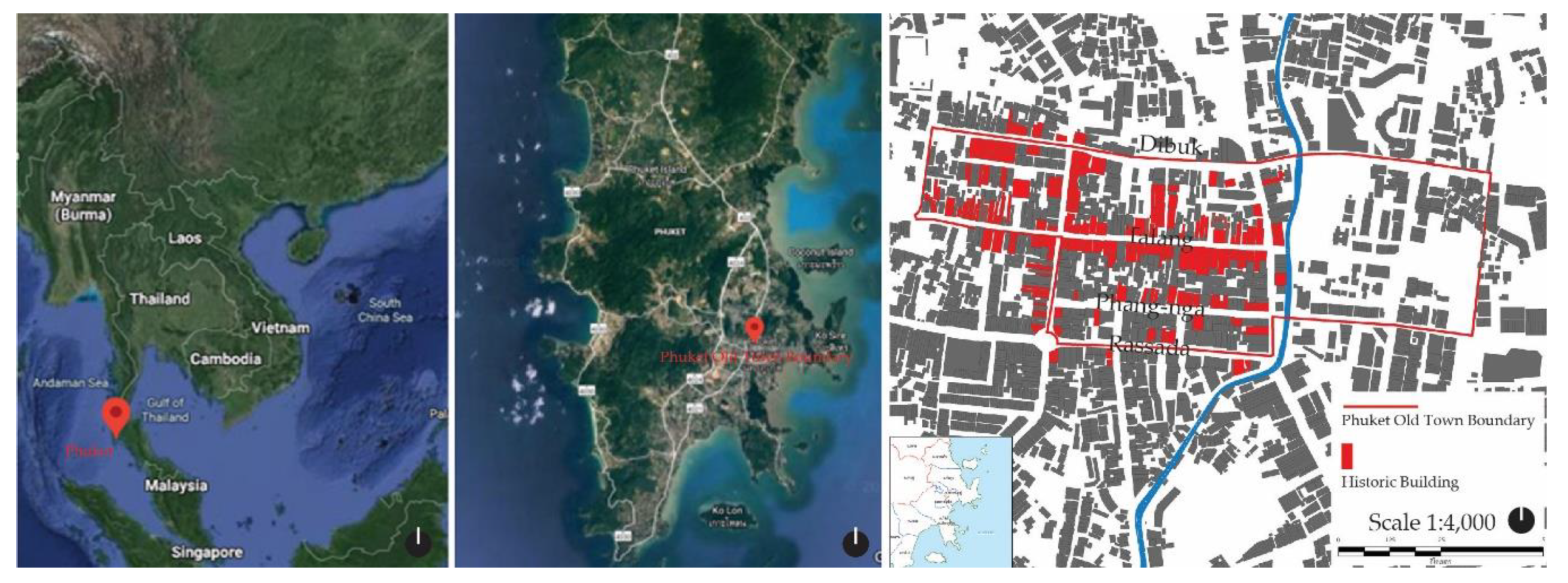

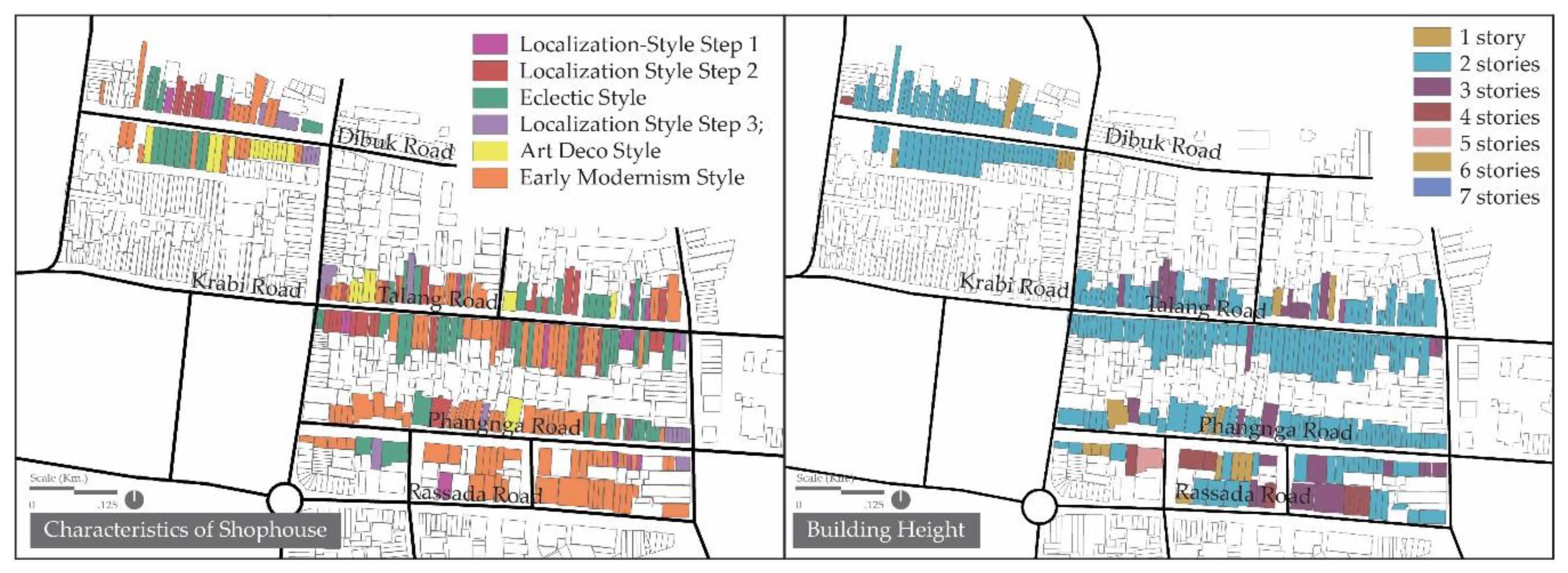
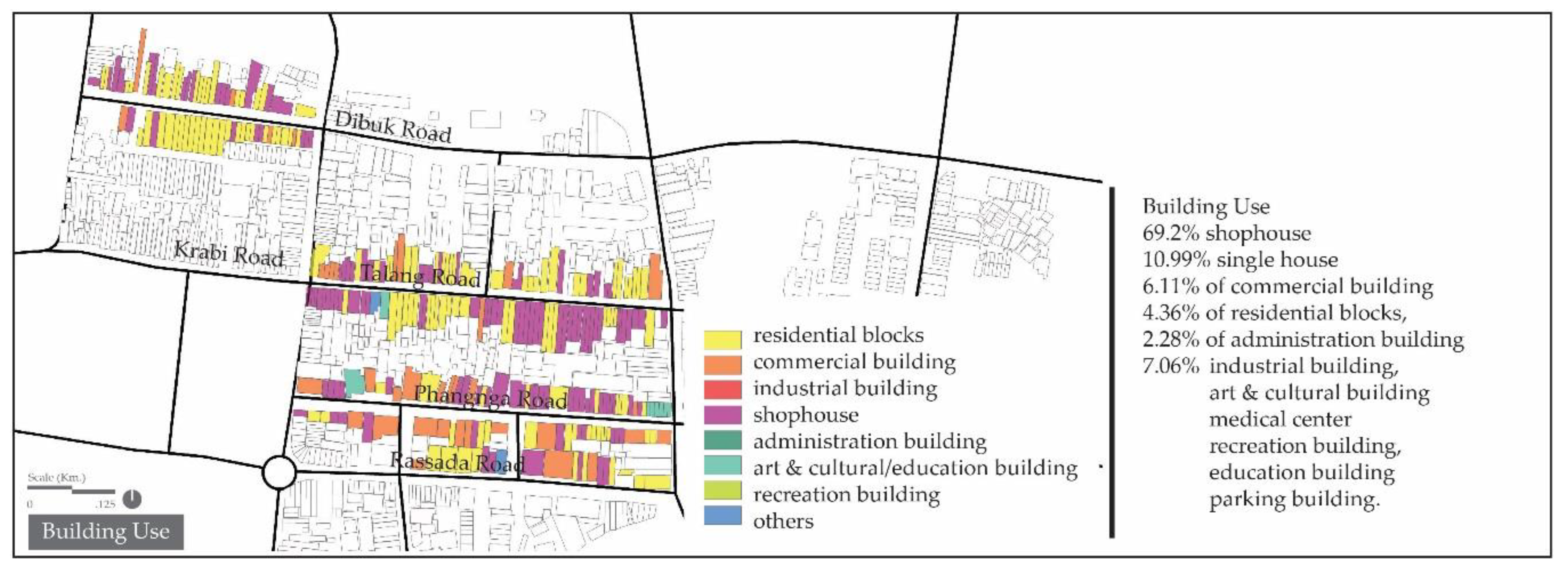
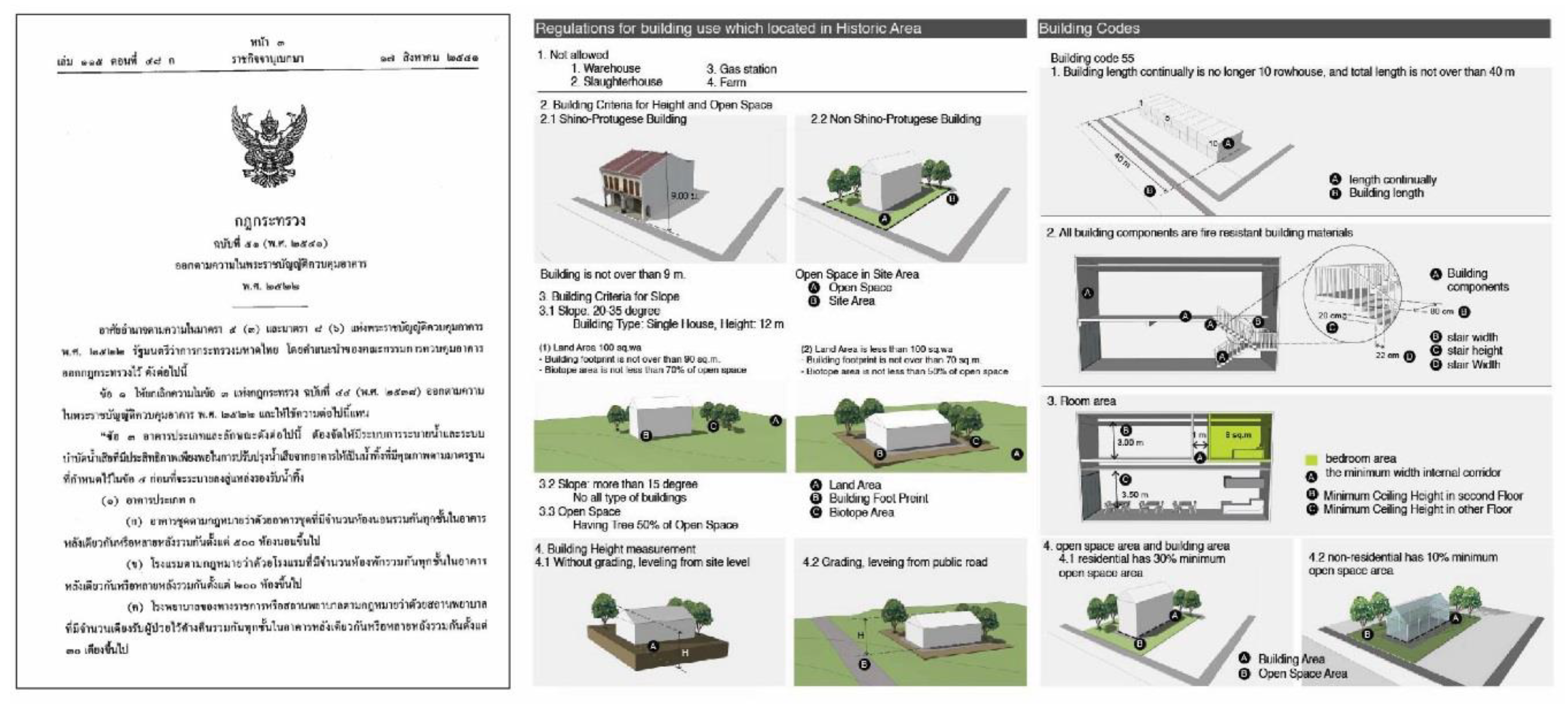
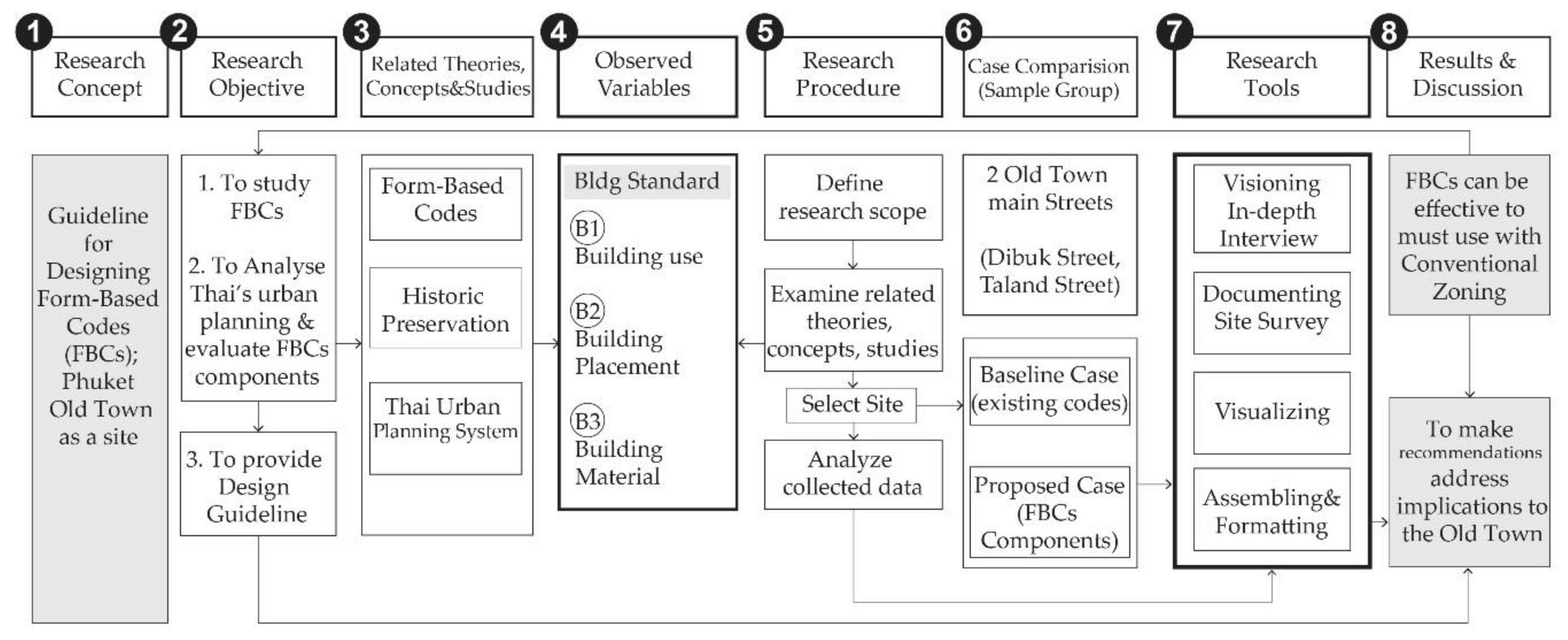
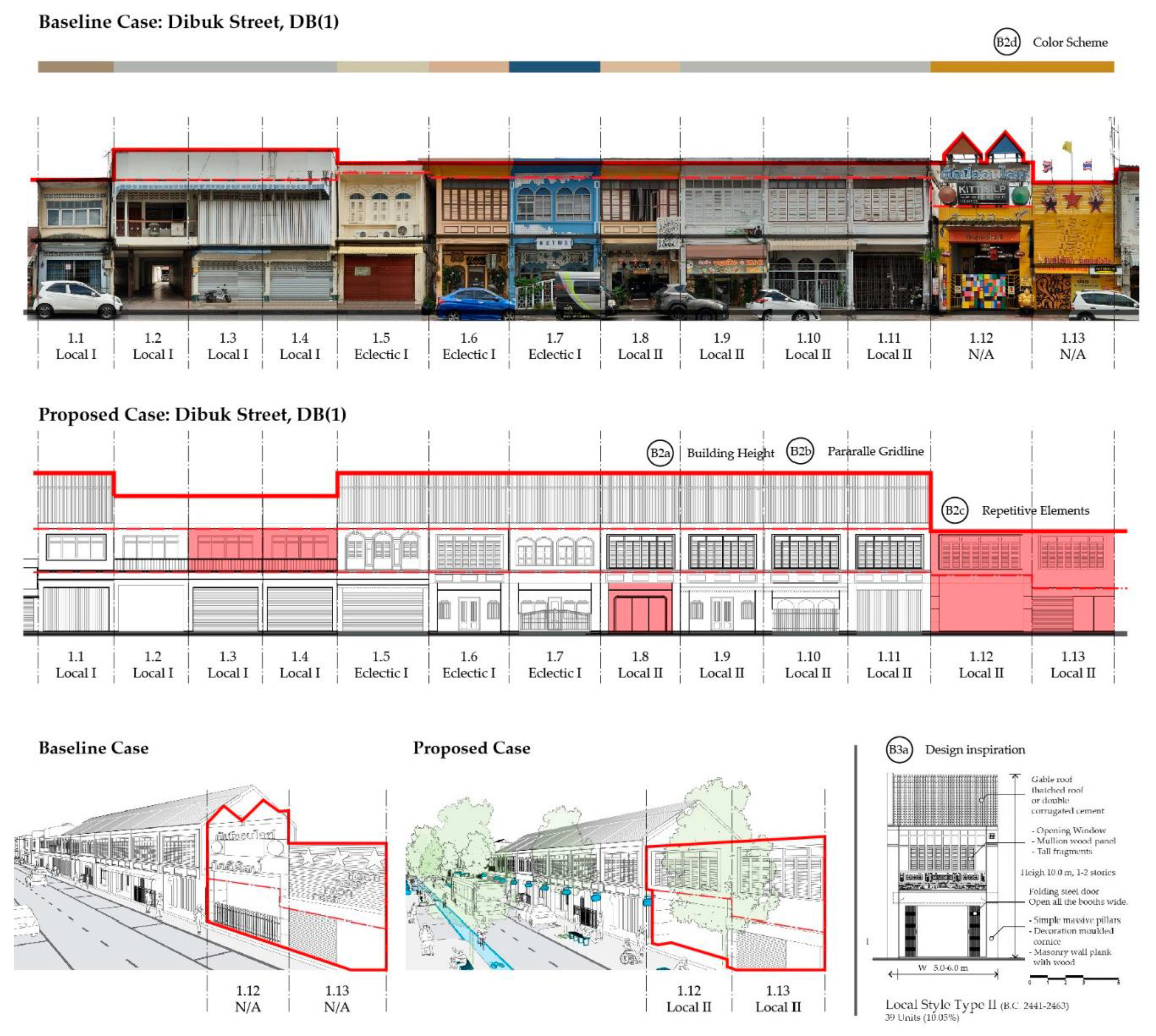
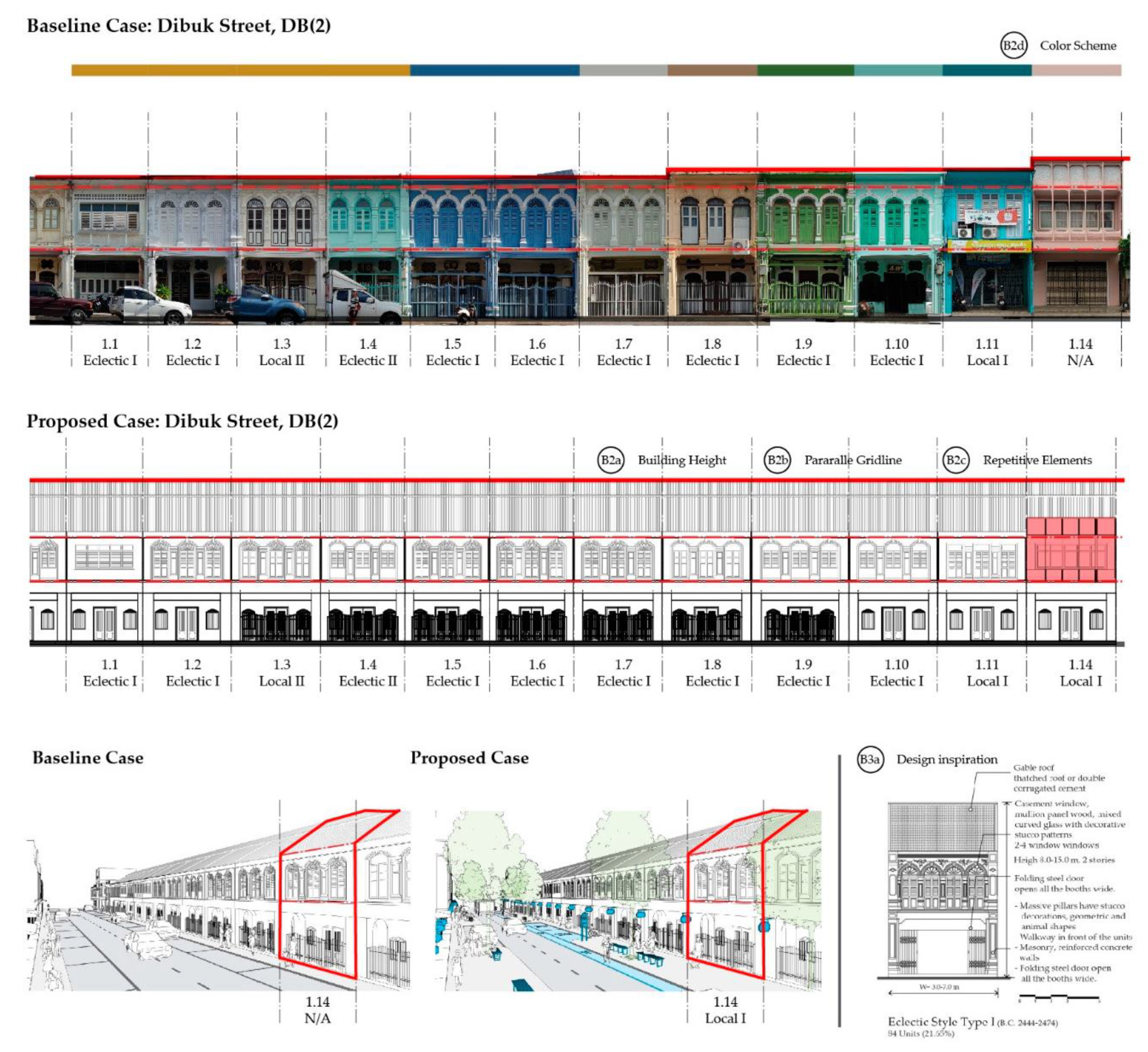
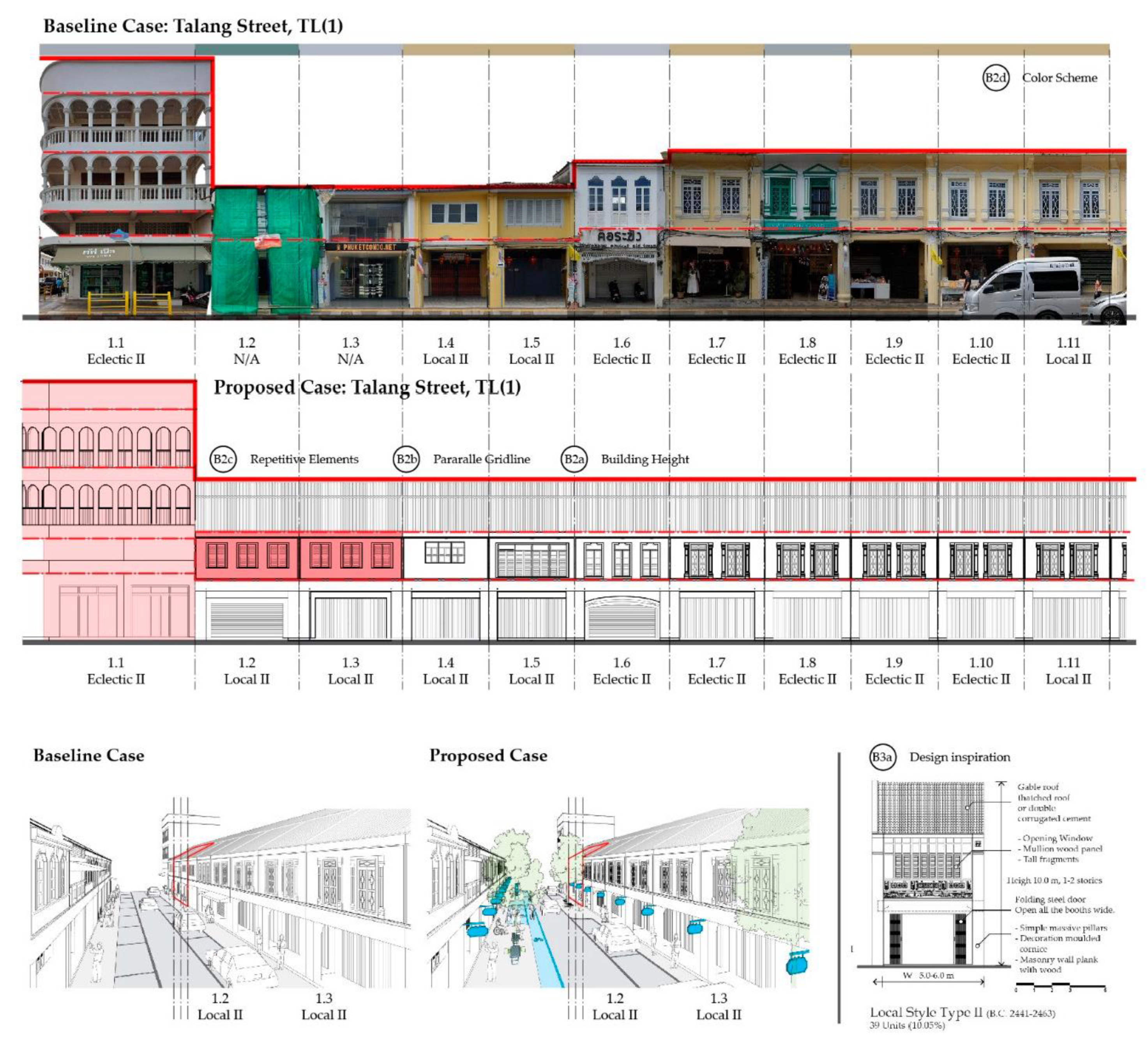
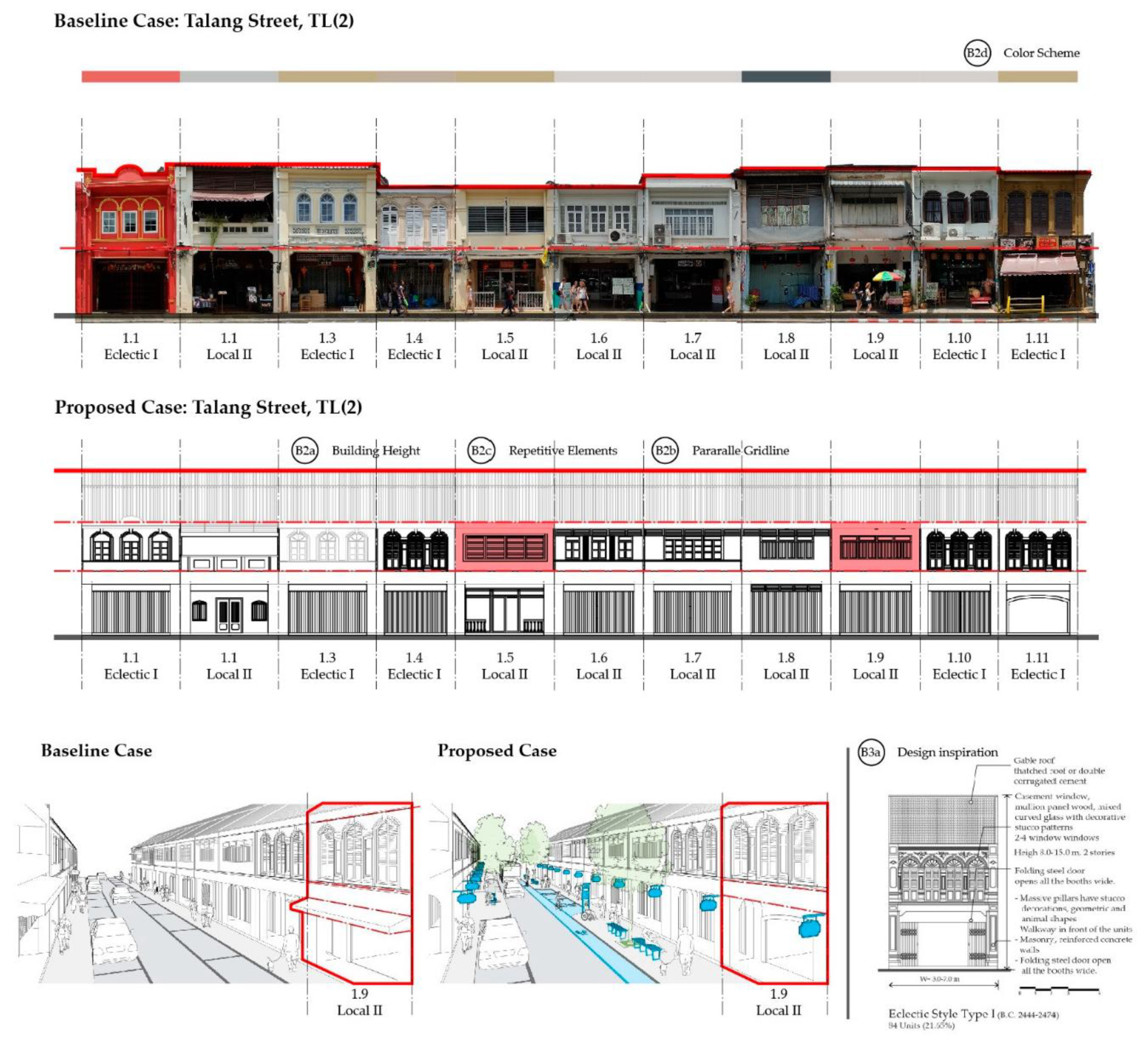

| Topic | Local Historic District (LHD) | Zoning District |
|---|---|---|
| Focus Point | Local historic district is based on design review. | Zoning is based on land use. |
| What Reviewed | The Historic District Commission (HDC) reviews the proposed work. HDC members gain expertise in architectural styles, historical materials, and the use of appropriate modern materials. | It is reviewed by planning commission members who do not have specialized expertise in historic preservation practices. Places added burden on planning/zoning board members. |
| Focus | The design review focuses on the retention of significant details and features that make up the character of a building. | The review focuses on broad-brush issues such as height, bulk, area, density, use, and setback. |
| Who Reviewed | The review is based on the Secretary of the Interior’s Standards for Rehabilitation, a national set of standards in use for 45 years. | The planning commission/zoning board must develop standards and guidelines. |
| Related to Preservation Tax Incentive | The HDC review is based on the same standards developed for federal historic preservation tax credits, which can be used by commercial property owners to rehabilitate historic resources. | The interpretation of standards and guidelines by those unfamiliar with basic preservation principles may result in work that does not meet federal historic preservation tax credit requirements. |
| What is Public Act and What is Purpose | The Local Historic District Enabling Act gives local governments the legal authority to regulate work in designated historic districts to increase property values, foster civic beauty, strengthen the local economy, and promote and safeguard heritage. | The Zoning Enabling Act gives local government the legal authority to regulate development and land use to promote public health, safety, and general welfare. The uncertainty of the guidelines for design review adopted under a zoning ordinance meet that requirement and could be challenged in court. |
| Observed Variables | Existing Thai Codes | Form-Based Codes | Compatibility of Codes | |
|---|---|---|---|---|
| Intentions | Details | |||
| B1—Building Use | Comprehensive plan | Allowed building use | Good | Good |
| Allow residential, commercial, government building, art, and cultural building and recreation area | ||||
| B2—Building Placement | Building codes /National Resources: for Sino–Portuguese and regular building | Building height, building height, parallel grid lines, repetitive elements | Good | Fair |
| B3—Building Materials | Building codes: control only fire components and no details of elements and materials | Building Façade: suggest for building elements, lighting, signage | Fair | Improve |
| Item | Observed Variables | Baseline Case (%) | |||
|---|---|---|---|---|---|
| DB (1) | DB (2) | TL (1) | TL (2) | ||
| Total buildings (units) | 56 | 61 | 77 | 89 | |
| Numbers in the Baseline Cases (%) | Historic buildings | 75.00 | 85.25 | 88.31 | 87.64 |
| Nonhistoric buildings | 25.00 | 14.75 | 11.69 | 12.36 | |
| Type of Sino-Portuguese style in Phuket Old Town (%) | Localization Style I | 30.77 | 7.14 | 0 | 0 |
| Localization Style II | 30.77 | 7.14 | 16.67 | 54.55 | |
| Eclectic Style I | 28.08 | 71.43 | 0 | 45.45 | |
| Eclectic Style II | 0 | 7.14 | 66.67 | 0 | |
| Pre-Modern | 0 | 0 | 0 | 0 | |
| Early Modern | 0 | 0 | 0 | 0 | |
| N/A | 15.38 | 7.14 | 16.67 | 0 | |
| Building Components | |||||
| B1—Building Use (%) | B1a—Residential | 30.78 | 71.44 | 25.00 | 0.00 |
| B1b—Commercial | 15.48 | 14.28 | 16.67 | 18.18 | |
| B1c—Shophouse | 53.84 | 14.28 | 58.33 | 81.82 | |
| B2—Building Placement | B2a—Color Scheme | Good | Good | Good | Fair |
| B2b—Parallel Gridlines | Fair | Good | Fair | Good | |
| B2c—Repetitive Elements | Improved | Good | Fair | Fair | |
| B3—Building Materials | B3a—Design inspiration: wall, door, windows, post | Fair | Good | Fair | Fair |
© 2020 by the authors. Licensee MDPI, Basel, Switzerland. This article is an open access article distributed under the terms and conditions of the Creative Commons Attribution (CC BY) license (http://creativecommons.org/licenses/by/4.0/).
Share and Cite
Masuwan, K.; Lertwattanaruk, P. Incorporating Form-Based Codes into the Design-Based Approach to Historic Building Conservation in Phuket, Thailand. Sustainability 2020, 12, 3859. https://doi.org/10.3390/su12093859
Masuwan K, Lertwattanaruk P. Incorporating Form-Based Codes into the Design-Based Approach to Historic Building Conservation in Phuket, Thailand. Sustainability. 2020; 12(9):3859. https://doi.org/10.3390/su12093859
Chicago/Turabian StyleMasuwan, Kanokwan, and Pusit Lertwattanaruk. 2020. "Incorporating Form-Based Codes into the Design-Based Approach to Historic Building Conservation in Phuket, Thailand" Sustainability 12, no. 9: 3859. https://doi.org/10.3390/su12093859
APA StyleMasuwan, K., & Lertwattanaruk, P. (2020). Incorporating Form-Based Codes into the Design-Based Approach to Historic Building Conservation in Phuket, Thailand. Sustainability, 12(9), 3859. https://doi.org/10.3390/su12093859





